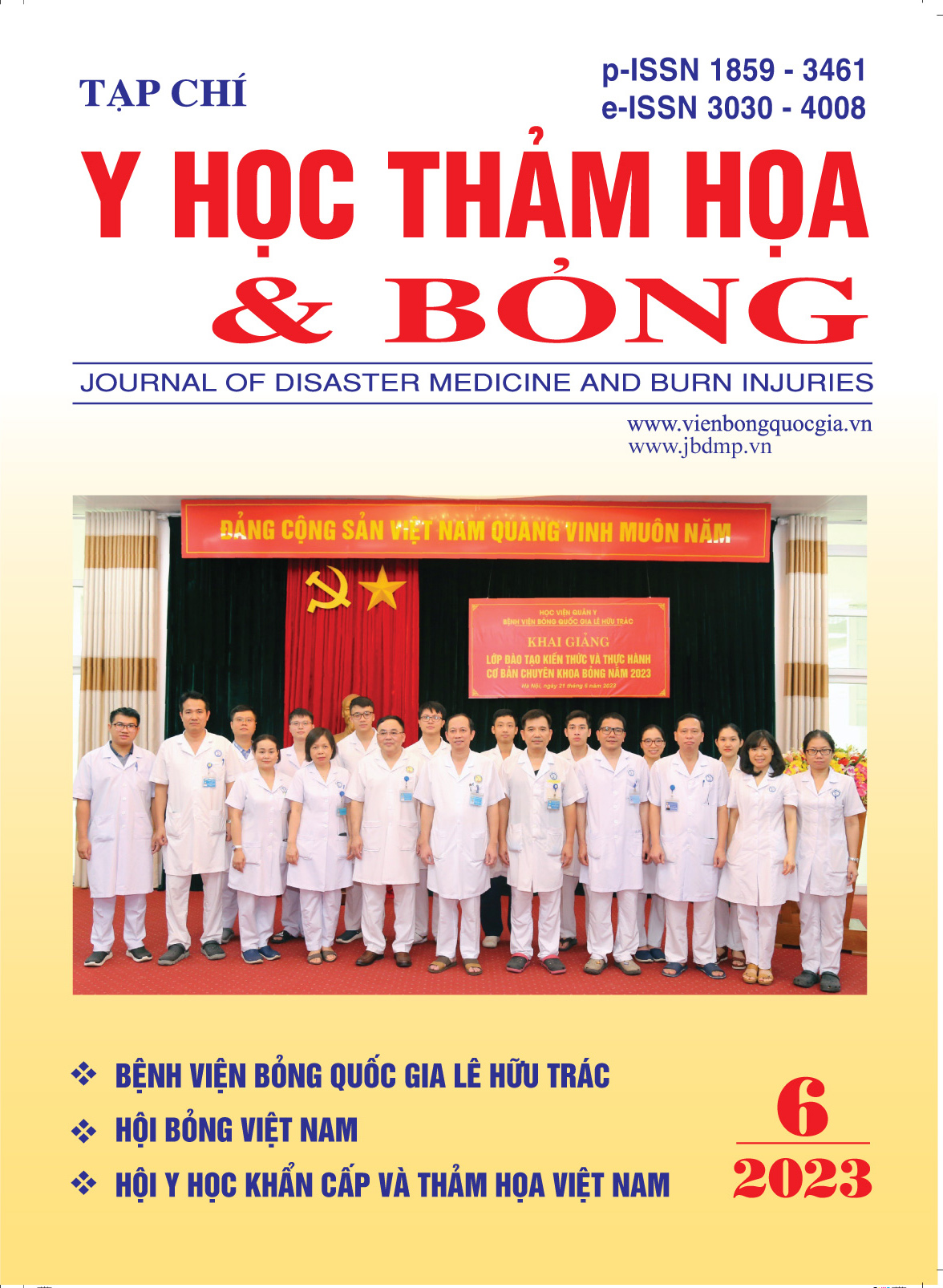Characterization of Escherichia coli isolated from burn and chronic wound patients in Le Huu Trac National Burns Hospital
Main Article Content
Abstract
Escherichia coli is responsible for many infections that affect burns and wound healing. They are highly resistant to antibiotics. Thus, the antimicrobial susceptibility pattern in burn and chronic wound infection may be useful in treating E. coli infections.
This study aimed to determine the prevalence and the antibiotic susceptibility of E. coli in burn and chronic wound infection in the Le Huu Trac National Burns Hospital from January 2021 to May 2023. E. coli were identified and the antibiotics susceptibility testing was performed using the VITEK 2 automated system. A total of 4326 samples were cultured. There were 41 (0.95%) samples positive and 4285 (99.05%) samples negative for E. coli. The E. coli infected were more common in males (n = 22; 53.66%) than in female patients (n = 19, 46.34%). The infection was the highest in farmers (n = 25; 60.98%), followed by the self-employed (n = 8; 19.51%) and retired (n = 8; 19.51%).
E. coli was highly sensitive to Fosfomycin (100%), Carbapenem class (> 90%), Colistin (92.31%), and Amikacin (87.18%) but resistant to Pefloxacin (100%), Minocycline (100%), Penicillins class (> 90%), and Trimethoprim-Sulfamethoxazole (84.62%). The use of Fosfomycin, carbapenem class, Colistin, and Amikacin are effective against E. coli and can help prevent the spread of infection.
Article Details
Keywords
Escherichia coli (E. Coli), antibiotic, resistant, burns, wound
References
2. Fouzia B. Changing patterns of burn infections. IOSR Journal of Dental and Medical Sciences. 2013;5:11-4.
3. Hernandez-Pastor L, Geurtsen J, Baugh B, El Khoury AC, Kalu N, Gauthier-Loiselle M, et al. Clinical burden of invasive Escherichia coli disease among older adult patients treated in hospitals in the United States. BMC infectious diseases. 2023;23(1):550.
4. Anwer M, Rauf M, Chishti N, Anwer S. Etiology and characteristics of burn injuries in patients admitted at Burns Center, Civil Hospital Karachi. Indian Journal of Burns. 2016;24:36.
5. Li H, Yao Z, Tan J, Zhou J, Li Y, Wu J, et al. Epidemiology and outcome analysis of 6325 burn patients: a five-year retrospective study in a major burn center in Southwest China. Scientific reports. 2017;7:46066.
6. Khan AA, Rawlins J, Shenton AF, Sharpe DT. The Bradford Burn Study: The Epidemiology of Burns presenting to an Inner City Emergency Department. Emerg Med J. 2007;24(8):564-6.
7. El Hamzaoui N, Barguigua A, Larouz S, Maouloua M. Epidemiology of burn wound bacterial infections at a Meknes hospital, Morocco. New Microbes and New Infections. 2020;38:100764.
8. Gupta M, Naik AK, Singh SK. Bacteriological profile and antimicrobial resistance patterns of burn wound infections in a tertiary care hospital. Heliyon. 2019; 5(12):e02956.
9. Sanders CC, Peyret M, Moland ES, Cavalieri SJ, Shubert C, Thomson KS, et al. Potential impact of the VITEK 2 system and the Advanced Expert System on the clinical laboratory of a university-based hospital. Journal of clinical microbiology. 2001;39(7):2379-85.
10. Hubab M, Maab H, Hayat A, Ur Rehman M. Burn Wound Microbiology and the Antibiotic Susceptibility Patterns of Bacterial Isolates in Three Burn Units of Abbottabad, Pakistan. Journal of burn care & research: official publication of the American Burn Association. 2020;41(6):1207-11.


